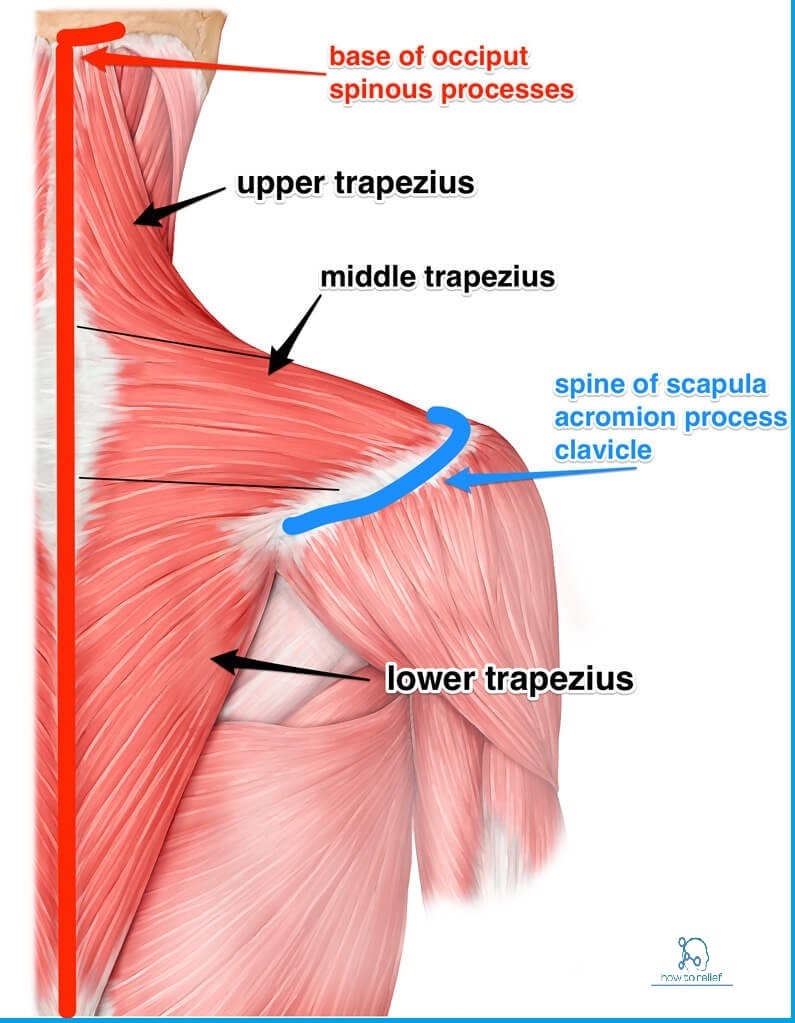3 Exercises For Lower Traps
Stabilise your shoulders for optimal function.
Your scapula is capable of so many movements like protraction, retraction, elevation, depression (and more), but has only one bony attachment to the body through the AC joint. The rest is attached by muscle, so if there are any weaknesses or imbalances there then the scapula can become unstable and lose function.
Essentially the scapula is a floating shoulder piece that relies on the proper functioning of your muscles to be stable.
Trapezius Muscle Anatomy
The trapezius as a whole is a large kite shaped muscle that’s main role is to stabilise and move the scapula.
There are 3 main fibre directions for the trapezius which accounts for different movements:
Upper fibres: Elevation and downward rotation
Middle fibres: Retraction
Lower fibres: Depression and upward rotation
If there are areas that are weak or inactive, other areas will compensate. For example, we’ve found that the lower fibres of the trapezius are commonly weak or inactive and that can mean that the other fibres (upper and middle) have to do more work to stabilise and move your scapula, leading to excess tension.
3 Exercises for your Lower Traps
These exercises will help train your trapezius muscles to work in context with stability and function.
1. Arm Bar
On your side, hold a weight vertical (can be anything, eg kettlebell, dumbell, barbell).
Keep your shoulders away from your ears (scapula depression) and roll your hips towards the ground while maintaining a vertical line with your arms.
Don’t drop the weight!
Scapula depression (moving your shoulders away from your ears) involves the use of your lower trapezius muscles. The rolling of the hips will challenge the activation of the lower trapezius and the overall stability of the scapula.
2. Overhead Squat
With a barbell overhead, move your “armpits forward”.
Keep your armpits forward with your shoulders away from the ears (depression and upward rotation) and move into a squat.
Go as low as you feel comfortable. You should feel tension in your mid back and trapezius muscles.
Moving into an overhead shoulder movement this way puts the scapula into protraction, depression, and upward rotation. This means the lower trapezius fibres are shortened. Training them in this way makes them stronger in these end ranges.
In the same way as the Arm Bar exercise, the lower trapezius muscles and overall stability of the scapula is challenged by the movement of the squat. Keep in mind that we are using this exercise as a way to challenge the shoulder stabilisers, so this might not resemble how you would perform an overhead squat movement for something like olympic lifting.
3. Scapula Pull downs or Pull ups
With arms straight, pull your scapula down under control.
Choose a resistance that makes the movement achievable but challenging.
You can also draw circles to add another challenge to your scapula movement and control.
Give these a go and let us know how you get on! Don't forget to share the love to somebody working on their shoulder stability!
Author: Laurent Pang
ONI Personal Training | Massage Therapy | Nutrition Coaching | Mobility Coaching



